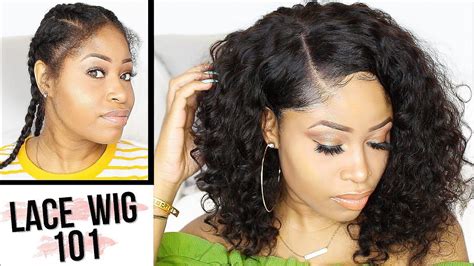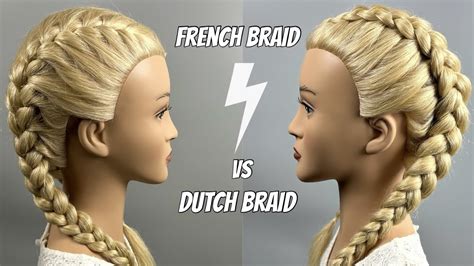Introduction

Braiding is an art form that has been around for centuries. From intricate crowns to casual ponytails, braids add a touch of elegance and versatility to any hairstyle. Among the most popular braiding techniques are the French braid and the Dutch braid. While they share similarities, these two braids have distinct characteristics that set them apart.
French Braid vs. Dutch Braid: A Visual Comparison
| Characteristic | French Braid | Dutch Braid |
|---|---|---|
| Appearance | Inside-out weaving | Outside-in weaving |
| Volume | Flatter against the head | More voluminous |
| Complexity | Slightly easier | Slightly more challenging |
Understanding the Techniques
French Braid:
- Divide the hair into three sections: left, middle, and right.
- Cross the left section over the middle section.
- Take a small section of hair from the left side and add it to the middle section.
- Cross the right section over the new middle section.
- Take a small section of hair from the right side and add it to the new middle section.
- Repeat steps 2-5 until the braid reaches the end of the hair.
Dutch Braid:
- Divide the hair into three sections: left, middle, and right.
- Cross the left section under the middle section.
- Take a small section of hair from the left side and add it to the new middle section.
- Cross the right section under the new middle section.
- Take a small section of hair from the right side and add it to the new middle section.
- Repeat steps 2-5 until the braid reaches the end of the hair.
Which Braid is Right for You?
French Braid:
- Ideal for a sleek and sophisticated look
- Suitable for all hair types and lengths
- Easy to create with practice
Dutch Braid:
- Perfect for a voluminous and eye-catching hairstyle
- Best suited for medium to long hair
- Requires more skill and dexterity to execute
Common Mistakes to Avoid
- Starting too close to the scalp: This can create a tight and uncomfortable braid.
- Overtightening the sections: This can damage hair and cause breakage.
- Not adding enough hair to each section: This can result in a thin and wispy braid.
- Forgetting to hold the sections securely: This can cause the braid to fall apart.
Pros and Cons
French Braid:
Pros:
- Creates a neat and polished look
- Versatile and suitable for various occasions
- Easy to learn and master
Cons:
- Can be flatter than a Dutch braid
- May take more time to create
Dutch Braid:
Pros:
- Provides more volume and texture
- Creates a unique and eye-catching style
- Can be dressed up or down
Cons:
- More challenging to master
- May take longer to create
Get Inspired: Creative Applications
Beyond the traditional ponytail, French and Dutch braids can be incorporated into various hairstyles:
- Braided headband: Create a thin braid and wrap it around the head like a headband.
- Braided crown: Braid several sections of hair and pin them together at the top of the head.
- Braided buns: Form a bun and wrap a braid around it to secure it.
- Fishtail braid accent: Weave a smaller French or Dutch braid into a larger braid.
- Braided hair clips: Braid small sections of hair and attach them to hair clips for a unique accessory.
Conclusion
Whether you prefer the classic elegance of a French braid or the voluminous allure of a Dutch braid, both techniques offer endless possibilities for styling. By understanding the techniques, avoiding common pitfalls, and drawing inspiration from creative applications, you can elevate your hairstyling skills and create stunning braids that turn heads.
